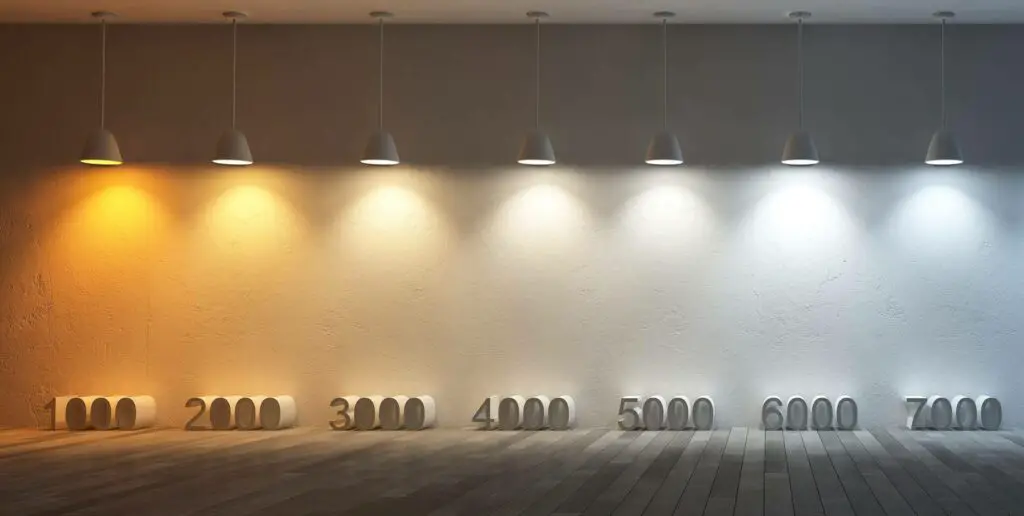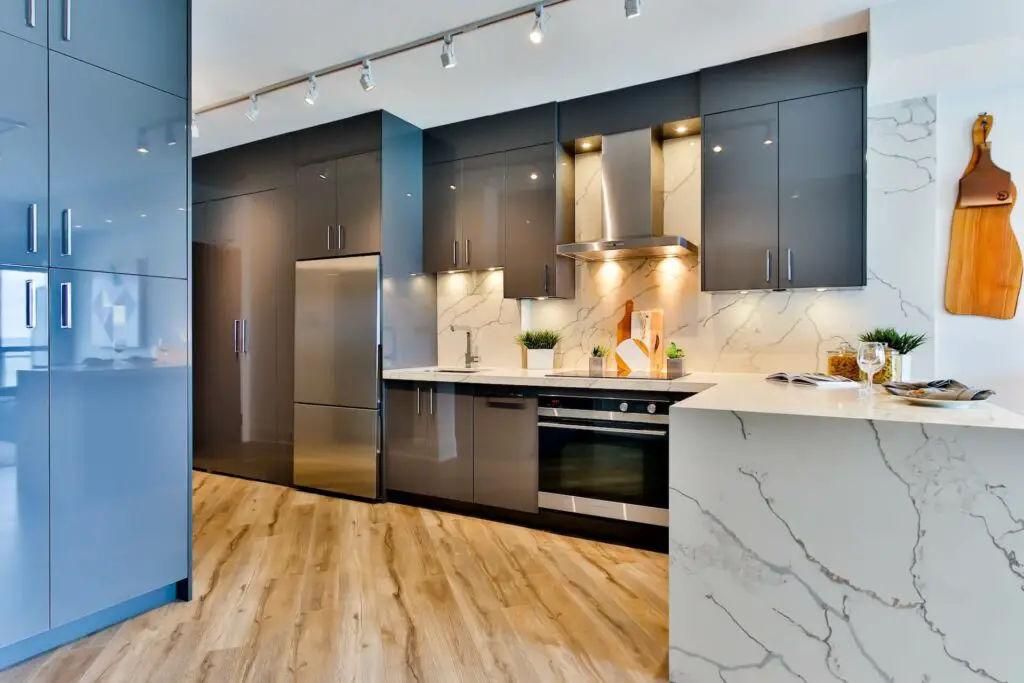I have read several studies on the relationship between human health and light, both natural and artificial, and they, more often than not, circle back to the importance of a proper lighting scheme in our homes. Let’s look at an often-overlooked property of bulbs.
What is color temperature and why is it so important? What is the best color temperature for bedrooms? Let’s see how you can use color temperature to your advantage when designing your bedroom lighting.
But first, let’s start with a brief answer to the main question.
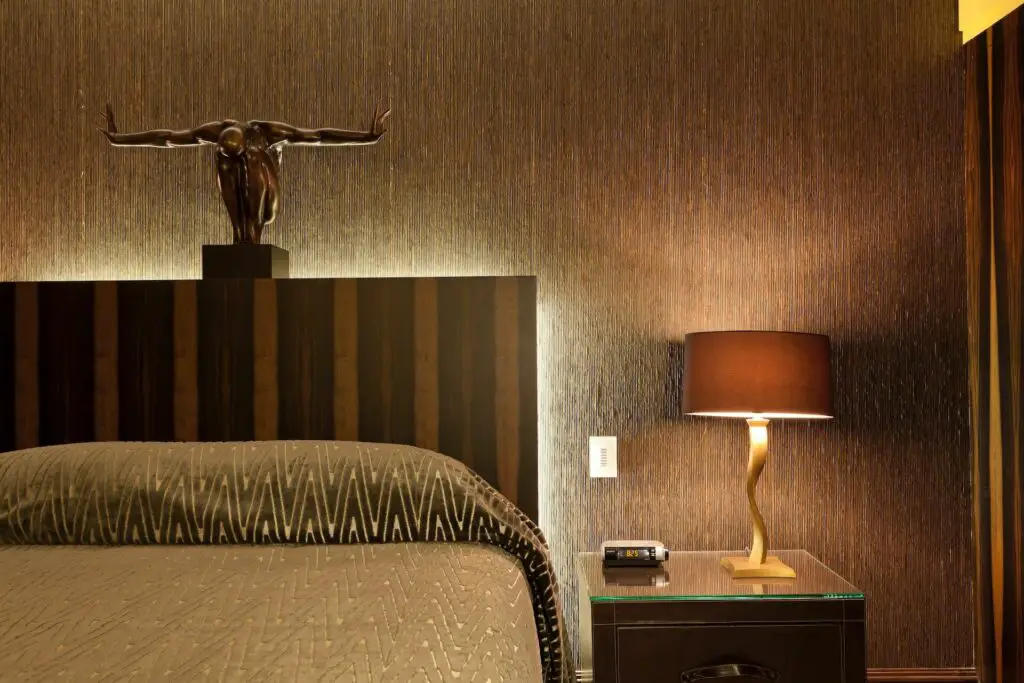
The best color temperature for bedrooms is around 2700-3000 K. Cooler blueish light (4000 K or higher) is best for focus and productivity, while warmer, more yellowish light is best for relaxation. For the best sleep, do not exceed 3500 K in the bedroom.
What Is Color Temperature And Why Is It Important
Color temperature is a property of bulbs that determines how “blue” or “orange” the light is. It is measured on the Kelvin scale, with lower temperatures (up to 3000 K) being warmer or more yellowish, and higher temperatures (4000 K and up) being cooler or more blueish.
To get a bit technical, color temperature is practically the color of light emitted by an opaque non-reflective body when heated to a specific temperature on the Kelvin scale. Usually, heated objects emit yellowish light, which becomes more blue at higher temperatures.
So, the color temperature of a light bulb is determined by comparing the light it emits to the light emitted by a heated object at a specific temperature. Does that make sense? Hope so.
Color temperature has the ability to change the entire feeling of a space. Whether you want to light your bedside table for reading or install hidden lights for under the bed, color temperature should be one of the first things on your mind (after lumens, which I talk about here).
Specifically, improper lighting has been proven critical to our mental health and well-being. A study published in the Journal of Consumer Psychology in 2014 showed that intense lighting leads to greater emotions (both positive and negative).
Sunlight & Co.
Even though most of us think of it as yellow, sunlight is actually closer to 5900 K, so it is more blueish.
Our relationship to daylight is complicated. Not only does sunlight help us synthesize vitamin D, it is also vital for our eye and bone health.
So, should all our light bulbs be within the sunlight range?
Not so fast.
The human body is not meant to function in daylight constantly, and the research surrounding the health benefits of what is called ‘daylight’ and ‘full-spectrum’ bulbs, which attempt to mimic sunlight as much as possible, is, to say the least, inconclusive.
Besides, we don’t only use artificial light to replace the sun. Sure, that’s one part of it.
But many of us use the time after sundown to unwind and relax before preparing for yet another busy day.
I am willing to bet no one can relax in a brightly lit space with cool white lights. That is because of our circadian rhythm. Experts advise avoiding bright lights 2 hours before bed to make it easier to fall asleep!
So basically, proper lighting is important so that we can perform tasks at night or when there is little available daylight, relax and socialize after long days, and avoid any accidents in the dark.
What Is The Ideal Color Temperature For Bedrooms And Why
The ideal color temperature for bedrooms is 2700 K with a maximum of 3000 K.
Lower temperatures are better at helping us relax and unwind, which is also the purpose of the bedroom.
See also: Read this guide on the best bedroom lighting for sleeping!
However, we must also consider the purpose of each specific fixture in your bedroom. Let’s look at those in more detail:
Ambient lighting
Ambient light is the light used to be able to see in a room. Think of the first switch you turn on when you enter a room – that’s your ambient fixture.
Now, in bedrooms, that would most likely be your awesome ceiling lights, such as a chandelier, pendant, or flush mount in the center of the ceiling or over the bed. This needs to be the warmest light in your bedroom, so it can be closer to 2700 K.
That is because this light source sets the bedroom’s ambiance and overall feeling. Around 2700 K is enough to create a cozy atmosphere while still allowing you to see the room clearly if e.g. you want to do some cleaning.
Task lighting
Task lighting is lighting used for tasks. In the bedroom, examples of tasks are reading a book, trying on clothes, putting on makeup, or ironing your laundry.
Usually, tasks require a bit cooler white because, as we saw already, cooler light helps with focus and productivity. That would be 4000+ K.
Also, reading is best under 4000-5000 K but that is just way too high for the bedroom. If you like to read a book in bed, you should know how to light your bedside table and not exceed 3500 K.
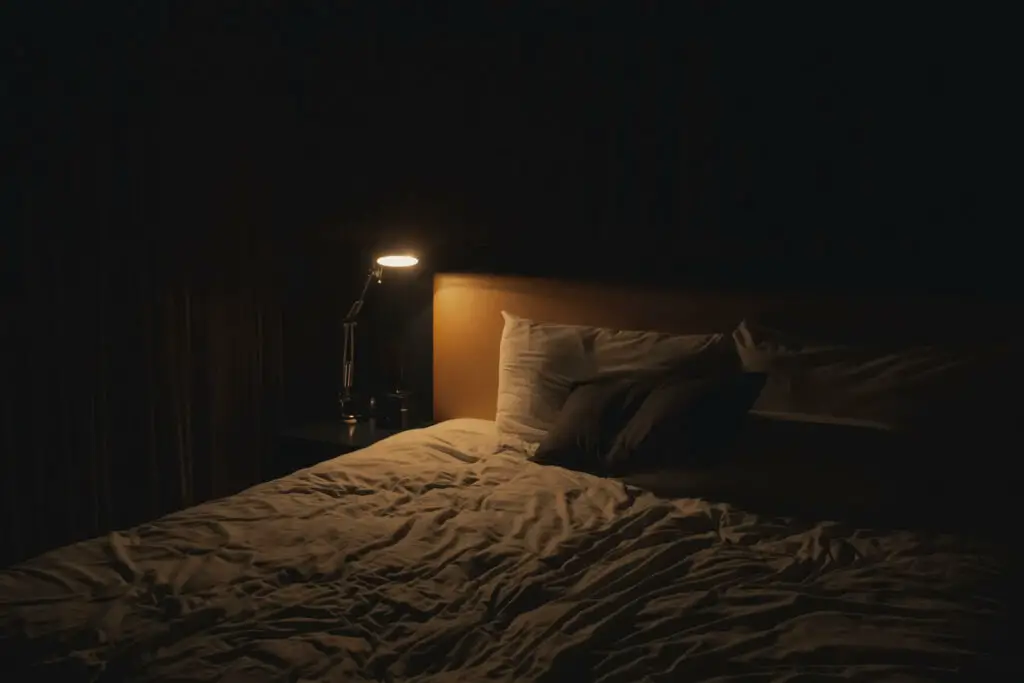
Same goes for other tasks in the bedroom. Although cooler white light is better for practical reasons, you don’t want to exceed 3500 K as that would be counter-productive for relaxation.
Accent lighting
Accent lighting is used for decoration and for the fun of it. Think of picture lights, plant lights, motion-activated LEDs under the bed, or even wall light art.
This is where you can get creative and you don’t really need to restrict yourself to a specific color temperature. You can even use color LEDs to add some color to your light!
If you stick with white, 3000 K is the sweet spot for accent lighting in the bedroom.
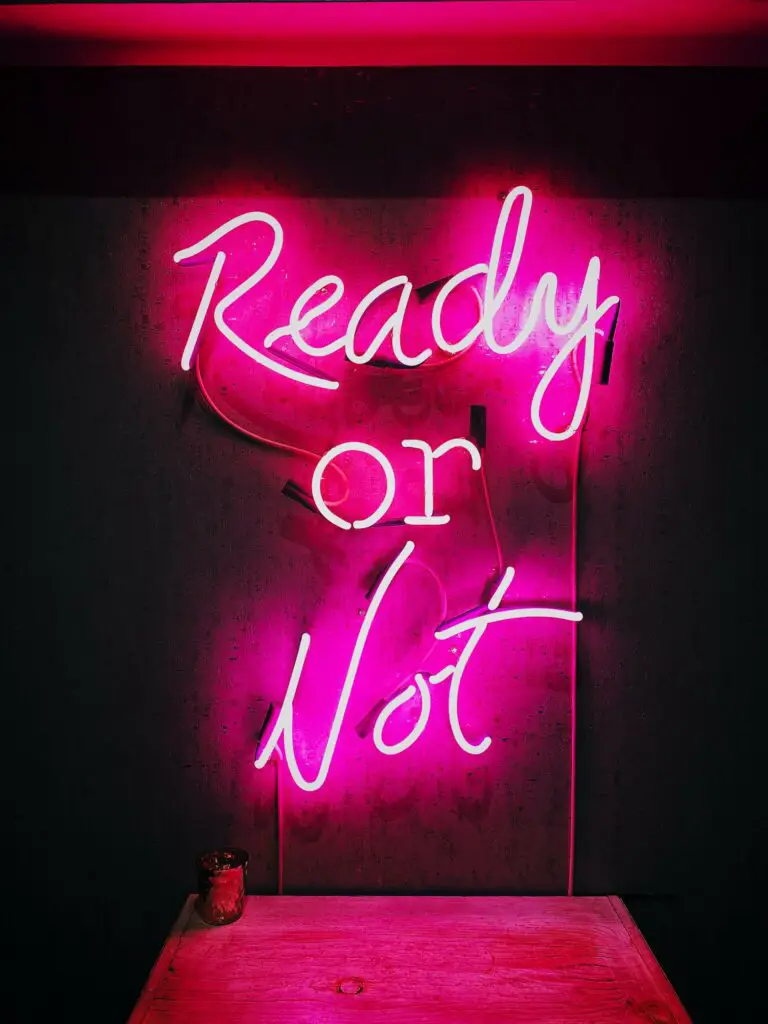
Wrapping up
So, the best color temperature for bedrooms depends mostly on the functionality and purpose of your light fixtures. In the bedroom – a space for relaxation – the ideal color temperature lies within the 2700-3000 K but can reach up to 3500 K.
Of course, the best color temperature for bedrooms will also depend on your personal preferences, which means that you can experiment with adjustable LEDs or different bulbs to figure out what works best for you!
